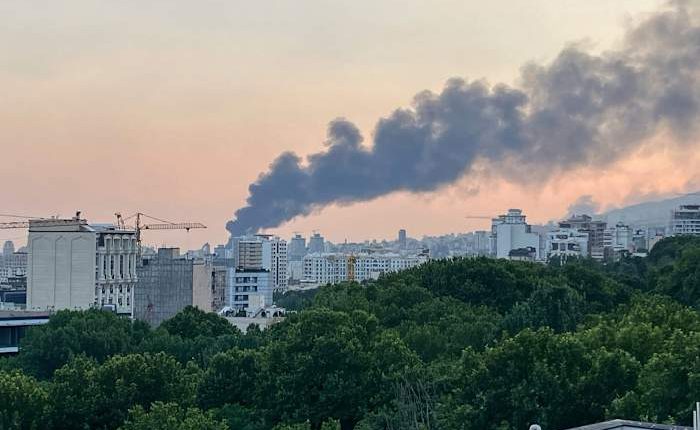Share this @internewscast.com

DUBAI – Amid Israel’s ongoing airstrikes on Iran, targeting military and nuclear sites, Tehran officials have suggested various measures as alternatives to responding with missile attacks.
These suggestions echo past strategies Iran has considered in disputes with Israel or the United States over the years. Proposed actions include disrupting shipping through the Strait of Hormuz, possibly withdrawing from the Nuclear Nonproliferation Treaty, and utilizing militant forces for further attacks.
Here’s a look at what those options could mean — both to Iran and the wider Middle East.
Targeting the Strait of Hormuz
The Strait of Hormuz is the narrow mouth of the Persian Gulf, through which some 20% of all oil traded globally passes.
The Strait of Hormuz straddles the waters between Iran and Oman and is as narrow as 33 kilometers (21 miles) at its tightest point, with shipping lanes just 3 kilometers (2 miles) wide in each direction. Any disruption here could significantly affect global energy markets by increasing crude oil prices, which would ultimately impact consumer costs for gasoline and related products.
There has been a wave of attacks on ships attributed to Iran since 2019, following President Donald Trump’s decision to unilaterally withdraw the U.S. from the 2015 Iran nuclear deal and re-imposing crushing sanctions on Tehran.
U.S. forces routinely travel through the strait, despite sometimes-tense encounters with Iran’s Revolutionary Guard, a paramilitary force answerable only to Supreme Leader Ayatollah Ali Khamenei. The U.S. Navy’s Bahrain-based 5th Fleet conducts those operations, known as freedom of navigation missions, to ensure the waterway remains open to business. Iran views those passages as challenging its sovereignty — as if it operated off the coast of the U.S.
Since the Israeli attacks began, Iranian officials have repeatedly raised blocking the strait — which likely would draw an immediate American response.
Withdrawal from the Nuclear Nonproliferation Treaty
Experts fear Tehran could respond to the strike by deciding to fully end its cooperation with the International Atomic Energy Agency, abandon the the Nuclear Nonproliferation Treaty and rush toward a bomb.
As a member of the treaty, Iran is obligated to explain the any radioactive traces outside of declared sites and to provide assurances that they are not being used as part of a nuclear weapons program. Iran insists its program is peaceful, though it is the only non-nuclear-armed state to enrich uranium up to 60%, a short, technical step away from weapons-grade levels of 90%. U.S. intelligence agencies and the IAEA assess Iran hasn’t had an organized military nuclear program since 2003.
There is precedence for the concern. North Korea said it withdrew from the treaty in 2003 and tested a nuclear weapon in 2006.
However, again, if Iran withdrew from the treaty, it could draw the U.S. into the fight, something Tehran so far has been seeking to avoid.
Asymmetric attacks by militants
Iran could encourage more asymmetric attacks, targeting Jewish tourists, synagogues or Israeli diplomatic missions as it has done in the past. However, it’s been a rough few years for those forces.
Iran’s allies, the self-described “Axis of Resistance,” have been severely hurt by ongoing Israeli attacks since the Oct. 7, 2023, Hamas attack on Israel, particularly Lebanon’s Hezbollah and Hamas in the Gaza Strip. Iran has long used those groups as both an asymmetrical way to attack Israel and as a shield against a direct assault.
Iraqi groups backed by Iran so far haven’t gotten involved, leaving just Yemen’s Houthi rebels as the only member of the axis to launch attacks on Israel since its campaign against Iran began.
Copyright 2025 The Associated Press. All rights reserved. This material may not be published, broadcast, rewritten or redistributed without permission.












